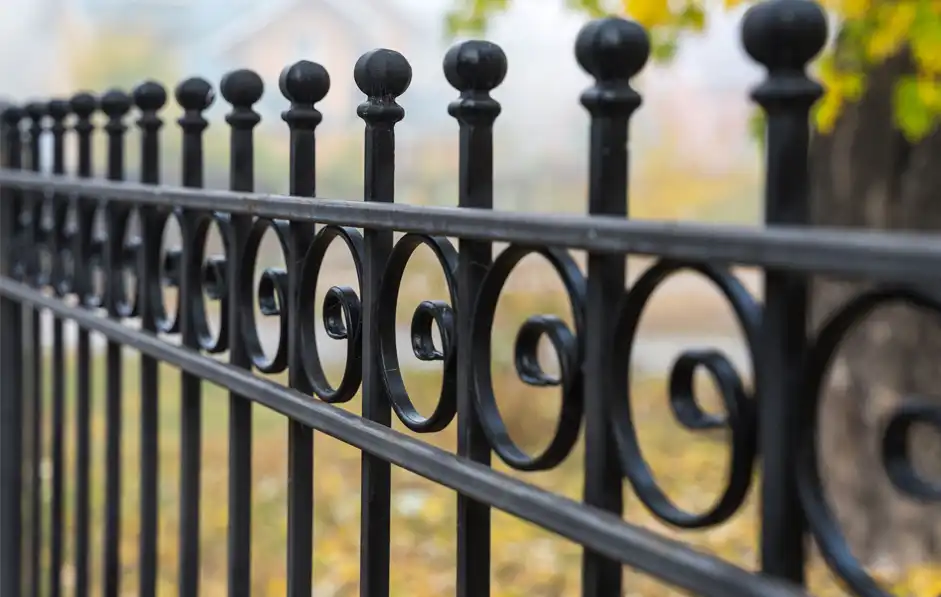All Categories
Featured

Picking the appropriate fence material for your residential property is a decision that stabilizes aesthetics, functionality, and budget. Among one of the most preferred options, timber, vinyl, and aluminum each deal distinct benefits and drawbacks. Understanding these can aid you make an educated option that aligns with your demands. Right here's a breakdown of the advantages and disadvantages of these 3 typical fence materials.
Timber Fence. Timber fence has actually been a classic option for homeowners as a result of its natural appeal and flexibility.
Pros:. Aesthetic Appeal: Timber offers a traditional and cozy look that complements a selection of architectural styles. Customizable: It can be painted, stained, or cut right into one-of-a-kind designs to fit personal preferences. Cost-efficient: Originally, wood fencing can be an affordable alternative compared to various other materials. Eco-Friendly: Wood is a renewable resource and can be sustainably sourced. Disadvantages:. High Upkeep: Wood calls for regular sealing, staining, or painting to avoid rot, insect damage, and weathering. Longevity Problems: Without correct care, timber can warp, fracture, or degeneration in time, specifically in areas with high moisture. Much shorter Life-span: A timber fence usually lasts 10-20 years, relying on the kind of wood and level of upkeep. Wood is excellent for those who value a typical appearance and agree to devote to its maintenance.
Plastic Fence. Vinyl is a modern-day, low-maintenance fence option that has expanded in appeal over the last few years.

Pros:. Reduced Upkeep: Plastic does not require painting, discoloration, or sealing and can be quickly cleansed with soap and water. Weather Resistant: It holds up against harsh weather without decaying, rusting, or bending. Lasting: Plastic fences can last 20-30 years with very little maintenance. Selection of Styles: Readily available in many shades, designs, and appearances, some plastic choices mimic the look of wood. Cons:. Greater Upfront Expense: Vinyl fencing can be extra pricey originally contrasted to timber. Brittleness in Winter: In severe chilly, plastic may crack or come to be brittle. Limited Fixes: Private panels can be difficult to replace, calling for mindful matching to the existing fencing. Plastic is finest fit for house owners seeking a sturdy, low-maintenance remedy with modern appearances.
Aluminum Fencing. Light weight aluminum fence is a light-weight and durable alternative, usually chosen for its modern look and convenience.
Pros:. Rust-Resistant: Aluminum doesn't corrosion, making it an excellent option for damp or wet environments. Low Maintenance: Calls for marginal maintenance and is very easy to clean. Long lasting: While light-weight, aluminum is solid enough to stand up to many environmental problems. Lengthy Life expectancy: Can last several years without significant wear or damage. Selection of Styles: Uses a elegant and smooth appearance, frequently used for decorative or decorative objectives. Disadvantages:. Greater Expense: The initial financial investment for aluminum fencing is higher than timber or plastic. Much Less Personal privacy: Aluminum fencings are typically designed with open pickets, making them less reliable for privacy. Vulnerable to Damages: Although durable, aluminum can be nicked by strong influences. Light weight aluminum is suitable for those looking for a trendy, durable option that requires very little care.
Making the Right Choice. Each fence material-- vinyl, timber, and aluminum-- offers distinct benefits and disadvantages. Your decision needs to rely on your details concerns, such as budget plan, upkeep choices, environment, and aesthetic goals:
If you love a typical look and do not mind regular upkeep,Select timber. Choose vinyl if you want a low-maintenance, weather-resistant fence with modern-day charm. Go with light weight aluminum if you focus on sturdiness, rust resistance, and a streamlined design. By weighing these pros and cons, you can pick a secure fencing material that improves your residential or commercial property while satisfying your functional demands.
Latest Posts
The Perfect Flooring for each Home
Published Apr 19, 25
1 min read
Your Regional Floor Covering Professionals in Orland Park, IL
Published Apr 19, 25
1 min read
Open Exclusive Discounts with WyHy's Love My Lending institution Incentives
Published Apr 19, 25
1 min read